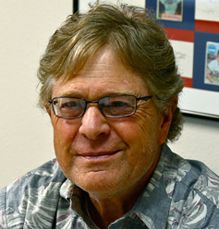Article
Why I Became A Concierge Medicine Doctor
Author(s):
Why should primary care physicians consider the concierge model of medicine? The question should really be rephrased: Why shouldn't they?

Why should primary care physicians consider the concierge model of medicine? The question should really be rephrased: Why shouldn't they?
It is no secret that the primary care landscape will change considerably over the next 15 years. The new paradigm on the front lines of medicine will not resemble the style of practice that most of us pursued after completing family practice residency or internal medicine residencies from 1972 through 2000.
The frontline of medicine will be turned over to well-trained physician assistants and nurse practitioners that will work with a dwindling core of family physicians/internists. Medical school classes are now producing 3-4 times more emergency room residents than family practice residents, and the number of internal medicine residents who will practice primary care will be overshadowed by those continuing on into subspecialties.
Certainly, there is no reason to rehash the reasons for this, but we all know that the era of independent primary care physician is over because of poor remuneration relating to both insurance and Medicare issues. Conversion to the concierge model is an alternative to losing one's independence or dropping out of practice altogether. It solves the problem of remuneration and liberates the physician’s time for improving patient care while ensuring quality personal and family endeavors.
Time v. Money
My argument in favor of concierge medicine, however, is not about finances, Medicare headaches, insurance rationing, and intolerable delays, or having to run the numbers within a traditional practice to survive.
It’s about restoring balance to your life.
It is about pursuing a successful primary care medical practice that promotes wellness for your patients and financial security for yourself. It is about balancing the time allotted to you by the concierge medical model so that hours spent at the office are enjoyable as you provide your patients with the best preventative medical care available while invigorating yourself with family activities and enjoyable avocations.My Story
After completing a family practice residency at the University of Vermont in 1977, I moved to the industrial small town of Columbia Falls, MT and joined my public health service partner to start our family practice together in the bustling town of 6,000.
In 2002 while working for the larger multispecialty clinic my partner of 29 years suddenly passed away. A compassionate and dedicated physician, he had become a champion for injured workers and promoting wellness in the workplace. He worked directly with the lumber mills and the aluminum plant to improve the overall health of their employees through a preventative medicine and wellness program.
On the Assembly Line
Upon his death, I inherited many of his ongoing workers’ comp patients and over the next seven years, the burden of dealing with chronic pain patients became somewhat overwhelming. My practice, by 2009, which had previously been a wonderful mix of primary care, urgent care, and sports medicine, had become less satisfying and more frustrating. I found myself on the proverbial assembly line that characterizes today’s healthcare system.
My partner and I through the years made significant innovations within our practice to keep things fresh and exciting about every seven years. In 1984 we started the Fitness Laboratory, a wellness and sports medicine clinic. At 14 years we gave up delivering babies and hospital work in general and initiated a wellness at work program for the local industries. We had participated in community medical education programs and in 1988 planned an international sports medicine conference just prior to the Calgary Winter Olympics. Working with local sports teams as team doctors and trainers was a constant.
We used to joke with each other that seven years had gone by and that it was time to make a change. We were used to change and found the opportunity exciting. And so it was no surprise that seven years after his death I decided it was time for me to make a change.
My partner would have loved my new concierge practice in Whitefish, MT.Courage to Change:
That attitude toward change initiated my relationship with Signature M.D. and the last three years of medical practice have exceeded my expectations. Although I was previously making a reasonable salary during retirement, I have found that as a half-time physician, working less than 16 hours per week and concentrating on executive physical examinations, the concierge model allows me to generate a salary very close to my previous salary with a patient load of 100 patients — 1/30 of my prior patient population.
Additionally, I have been able to set up three different payment plans for those wishing to join my concierge practice that accommodate their financial needs and the snowbirds that migrate south for the winter.
If you're between 35 and 70 years old, the changes developing in the primary care landscape can only be considered bleak for the primary care doctor. Approximately10 million people will have joined the Medicare ranks over the next 10-15 years and insurance companies continue their vice grip on physician practices and free movement.
It may be time for you to stop skiing on the groomed runs, on the ice, on the skied out backbreaking mogul fields of primary care medicine. It's time to check out the backcountry and experience the pace and an exhilaration of that which can restore balance to your life.
It's time to consider concierge medicine.
Doug Pitman, MD has his own private practice focusing on sports and family medical care.





